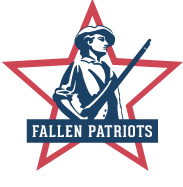The Daytona Beach News Journal | By: Shaun Ryan
Jack Howell, founder of the Teens-In-Flight program, recently cut the ribbon on the new facility.
After a year of meeting in retired Marine Col. Jack Howell’s garage, the Teens-In-Flight program he founded has found a new home.
Surrounded by program participants, parents and public figures, Howell and his wife, Samantha, recently cut the ribbon on a new facility they are sharing with Daytona Aviation Academy near the Flagler Executive Airport.
Teens-In-Flight is a nonprofit foundation that provides flight training and aviation maintenance instruction to teens after a parent has been killed or disabled in action, whether in the military or in law enforcement. It partners with Embry-Riddle Aeronautic University and Children of Fallen Patriots to broaden its outreach and contracts with flight schools in other parts of the country to extend its mission to students across the nation.
Participating teens have an opportunity to earn, at no cost, a private pilot’s license. At the same time, it offers something more — what Howell calls “tools for life.” Participants learn to be responsible and accountable, gain a sense of priority and keep their grades up.
In the dozen years since the program’s founding, about 130 teens have gone through the program and several have obtained their licenses, according to Howell.
But last year, the program was forced to move out of office space it had been using at the airport.
“These things happen, and that’s just the way it is,” Howell said by way of explanation.
Finding a new address for the program began when Teens-In-Flight board member Rick Lehman initiated negotiations with Daytona Aviation Academy president Ken Ali. A deal was worked out and now Howell’s garage is no longer a ground school.
It was by no means the first challenge Teens-In-Flight has weathered. Two years ago, the Cessna used by the program needed a new engine, something that would cost about $44,000. With the assistance of community leaders, such as then-sheriff James Manfre, the engine was replaced and the plane was airborne once again.
Throughout the trials, Howell never gave up. At the ribbon-cutting ceremony, he held up a dictionary in which he claimed to have crossed out all negative words. No, never, can’t, won’t — they don’t exist in Howell’s lexicon.
“Let’s get it done,” he said. “That’s the way I’ve always been.”
Howell told those assembled for the ribbon-cutting that Teens-In-Flight had its origin in his days with the U.S. Marine Corps when he was called upon to inform families of the death of a loved one. He was acutely aware that when he’d finished his duty, a distraught family was left behind.
“I felt bad, and I wanted to do something for the teens,” he said.
Lehman, meanwhile, had spent 30 years working with at-risk youth via a horse ranch, where he offered therapeutic riding. Along the way, he made a discovery.
“It didn’t matter where they grew up,” he said. “It didn’t matter their household situation. It didn’t matter which part of town they were in. They all shared one common trait: They had no positive mentor. That’s what Teens-In-Flight is all about, having a positive mentor.”
The new facility has ample space for instruction. There’s a large white board and computers dedicated to flight simulation.
Sitting at one of the simulators, student Gabe Araque described his appreciation for the program.
“It’s just really nice,” he said. “The colonel’s taking his time and his energy and all his money and putting it into us when people don’t usually do that.”
Further information is available online at teens-in-flight.com.

